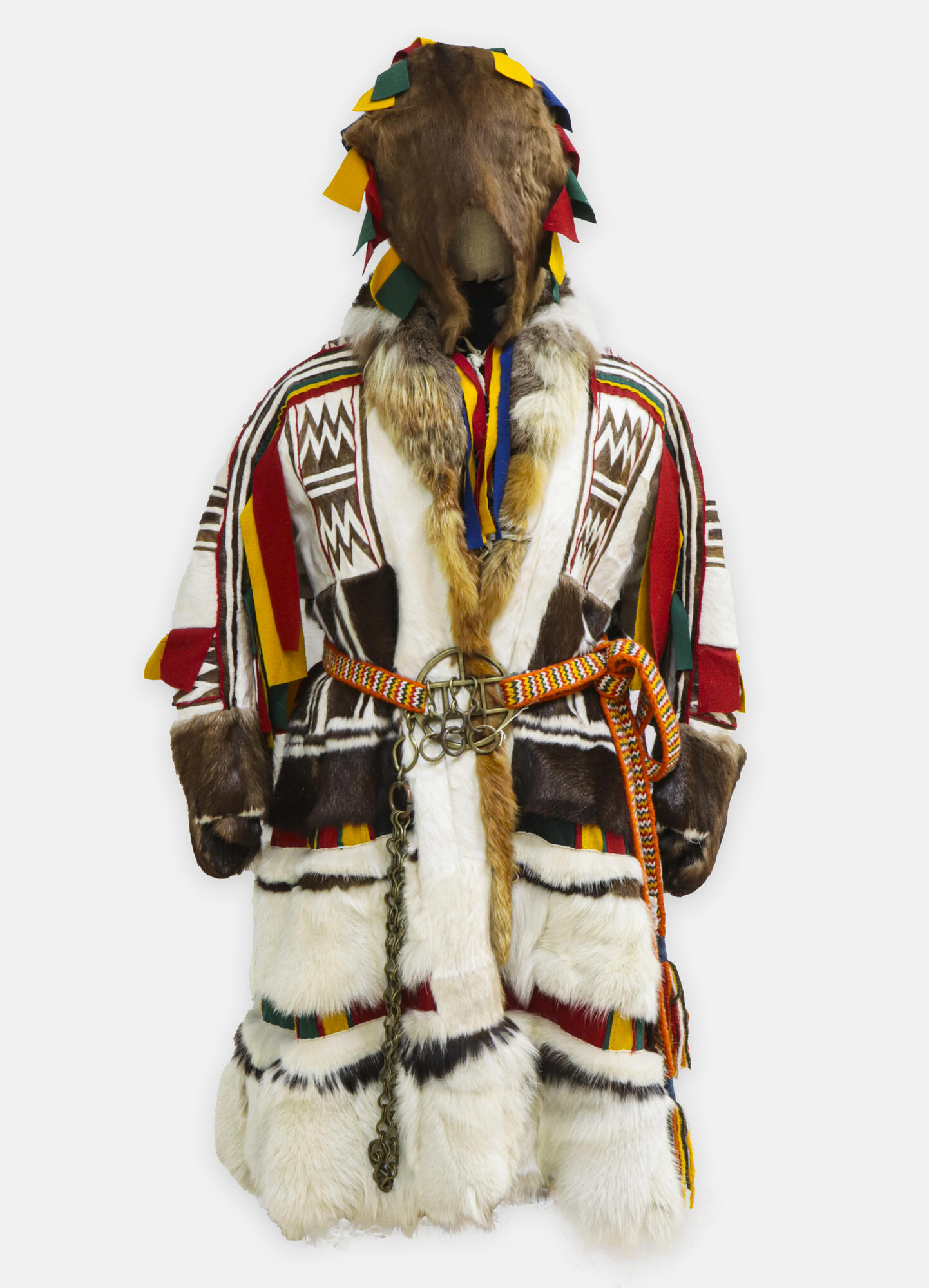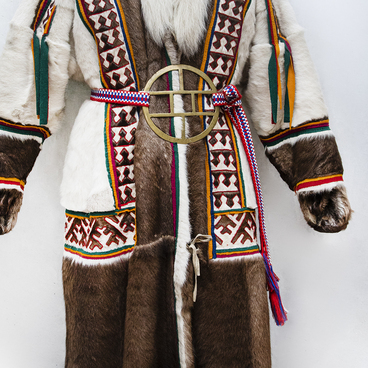A panitsa is a type of Nenets women’s outerwear. The summer version is made of cloth or suede, and the winter one — of animal hides. The Nenets Museum of Local Lore houses eleven panitsas. The displayed panitsa of the Kanin type is widespread in the Kanin and Timan Tundras, on Novaya Zemlya and Kolguyev Island. It is distinguished by the use of only horizontal seams.
The word “panitsa” is used to refer to women’s outerwear in European Russia, while beyond the Urals, it is known as a “yagushka”. The upper part of the panitsa is sewn from pieces of squirrel, beaver, and fox fur, the middle part is made of deer fur, and the lower part — of strips of dog fur. The collar is usually made from the fur of Arctic and red foxes.
Such differences in the use of furs are symbolic as they represent the traditional worldview. The Nenets, Mansi, Khanty, Komi, and other northern peoples believe that the world is made up of three realms: the Lower World (the netherworld), the Upper World (the realm of the divine), and the Middle World (inhabited by humans). Each realm corresponds to certain spirits and images in the animal world.
The cut of northern clothes is greatly influenced by the climate. Thanks to the wide armholes, it is easy for the wearer to take the arms out of the sleeves and complete some tasks inside the coat so that the fingers do not freeze in the cold. In the same way, women fasten their panitsas: there are seven pairs of leather straps sewn along the sides from the collar to the knees. The wearer ties these straps from the inside after taking the arms out of the sleeves.
The mittens are sewn to the sleeves so that there is no risk of losing them outside in cold weather. There are small openings at the wrist so that the wearer can take the hands out of the coat for a short period. The mittens are usually made of kamus, the stiff fur from the lower leg of a deer. For extra warmth, the winter panitsa is lined with fur on the inside. Along the sides of the lining, there are strips of fur from under the neck of a deer. Their long pile protects the wearer from cold air.
Unlike the men’s winter outerwear of the indigenous peoples of the North, the women’s panitsa has a front opening. Both men and women wear a belt, which not only secures their clothes, but also serves as a talisman, decoration, and indicator of social status.
For men, a leather belt replaces a bag and pockets, as it can be used to carry tools and other necessities. A woman’s belt with copper plates, pendants, and multicolored tassels supports the abdomen during pregnancy and after childbirth. It also protects the owner against the evil eye.





